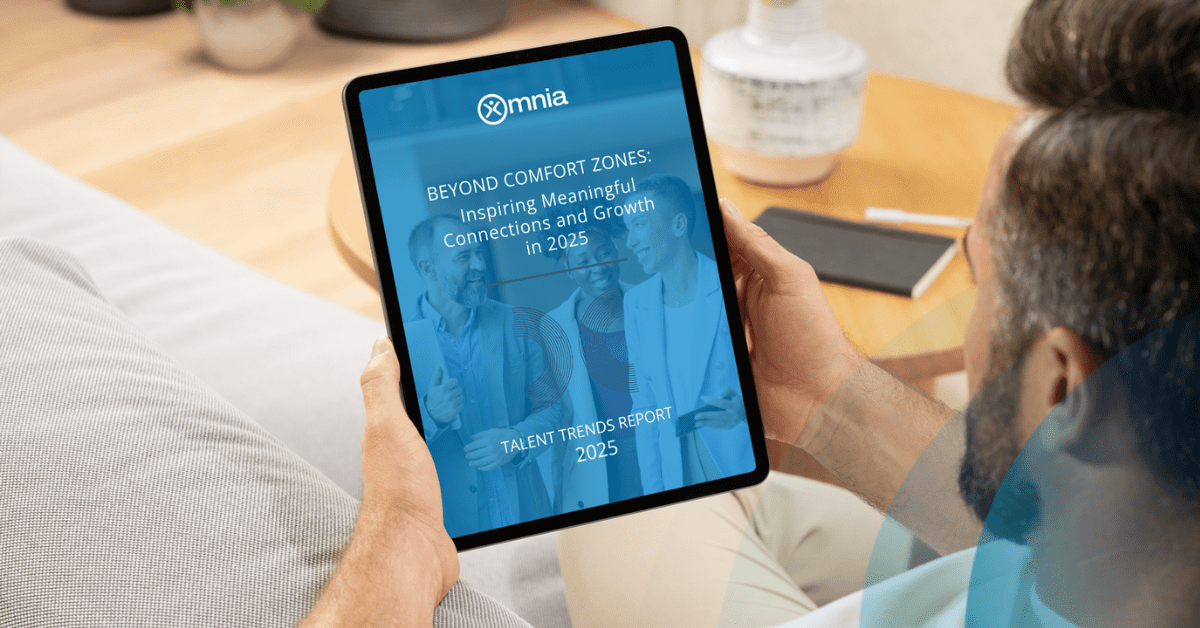April 7th is World Health Day, and 2023 marks the 75th anniversary of its sponsor, The World Health Organization (WHO). This year’s theme is “Health for All.” Each year World Health Day brings us together to focus on global health issues and the rise of diseases caused by increased air pollution, lack of health care coverage, and chronic health issues like diabetes, mental illness, depression, and heart disease. It’s about spreading awareness for the right to equal medical treatment without discrimination and educating people on preventing diseases caused by poor lifestyle habits. Policymakers come together to focus on change for the health of their country’s citizens.
World Health Day is also a good day for business leaders to pause and consider what we can do to promote employee wellness — particularly mental health. Several surveys indicate that workplace stress and burnout continue to rise. A recent Deloitte survey showed that 77% of professionals have experienced burnout in their current job. Nearly half of millennials say they have left a job specifically because they felt burned out, compared to 42% of all the survey respondents. These are some powerful statistics indicating we need to do something about this.
Stress vs. burnout — what’s the difference?
First, let’s look at the differences between burnout and stress. Stress is common in work and life and usually has an end in sight, even if getting there may be difficult. Stress comes amid a difficult negotiation, a conflict with a coworker or, like me right now, pushed against a deadline to write a blog. In most circumstances, stress comes and goes; we even feel a sense of euphoria once we’ve gotten to the other side. However, burnout is chronic. It’s the cumulation of unchecked, built-up stress over time that has never gotten resolved. When a person begins experiencing burnout, they may no longer feel confident that they can get through the negotiation, they don’t care about working through the conflict with their coworker, and they have no energy or drive to meet the deadline. Burnout is a bone deep feeling of exhaustion mixed with feelings of depletion as well as declining confidence and overall drive. It’s like being in a constant state of the Sunday blues.
In 2019, the World Health Organization classified burnout as an occupational phenomenon resulting from workplace stress that has not been successfully managed. It is characterized by three dimensions:
- Feelings of energy depletion or exhaustion
- Increased mental distance from one’s job or feelings of negativism or cynicism related to one’s job
- Reduced professional efficacy, a lack of confidence, or feelings of ineffectiveness related to one’s job
The consequence of employee burnout
If you’re a service organization, your employees likely make up most of your company’s assets and the largest line item on your budget. Your people are your number one resource. Burnout can impact your bottom line. If you’ve got a burnout issue in your workplace, you’re likely experiencing loss in productivity and sales, increasing customer complaints, and employee turnover.
According to Gallup, employees who are burned out are 2 times more likely to be looking for another job. In another survey by Limeade, 40% of workers are leaving their jobs due to burnout — and many are doing so without having another job lined up.
Recognizing the signs of burnout
A recent article published by Calm Business listed these as the top signs of burnout that you could be overlooking and behaviors to watch for as key signals.
- Loss of confidence. You may notice that an employee has suddenly lost confidence in their abilities, becoming tentative about taking on new work assignments or becoming hypercritical of themselves while voicing fear of rejection or criticism.
- A change in socializing at work. Burnout can lead to feelings of lethargy and disconnectedness. If you notice that someone who is usually gung-ho to participate in small talk on calls and regularly joins in on social and community service activities begins disconnecting on a regular basis, that could be a sign that something is wrong.
- A change in general behavior. This is when someone starts behaving in an opposite way to how they normally operate. It’s not about somebody being in a bad mood for a day or two. This is a major shift in personality — when someone who is typically assertive and bold becomes cautious, or someone you know as usually positive and talkative becomes consistently quieter and more curt in their interactions.
- Lack of care at work. Another common sign of burnout is when someone appears to no longer care. This shows up as paying less attention to detail and a lack of concern for accuracy, timelines, or overall performance.
- Physical illness. I personally experienced burnout in another role quite a few years ago. It wasn’t until I started having an onslaught of physical and chronic issues that I realized I was facing burnout. As I reflect back on these other signs, many of them were also present.
It’s important to look at all these signs together. Look for trends rather than overreacting to individual incidents. Just because someone declines a happy hour, gets sick once or twice in a few months, or asks if they can leave their camera off on a Zoom call does not necessarily mean that they are burned out. The important thing is to keep your radar up and pay attention to the general and consistent behaviors of your staff. Be mindful of drastic, ongoing changes in a particular area or a combination of these.
Addressing burnout
While burnout is an organizational issue, we typically put it on the backs of the individual and prescribe self-care. Or we turn to employee wellness and benefits programs like yoga, wellness tech, or subsidized gym memberships and hope that works. Because this has become a workplace phenomenon, leaders need to take a more systematic, strategic approach to addressing root causes. We need to take a deep look at our company culture and what may be contributing to rising burnout in our own workplace.
According to research, burnout has six main causes:
- An unsustainable workload
- Perceived lack of control
- Insufficient reward for effort
- Lack of a supportive community
- Lack of perceived fairness
- Mismatched values and skills
Over the course of the past few years and the traumas we all faced with the COVID-19 pandemic, it’s likely that many of you reading this have experienced some of these feelings and signals yourself. On an individual level, it is important that we recognize the signs in ourselves and take measures to prevent burnout from happening to avoid impacting our work and potential for career success. Learning to say no, setting boundaries, managing our own expectations, making time to retain and grow social connections, taking regular workday breaks, fitting in exercise, and using vacation time are all strategies that can help.
As a leader, if you see these signals in any of your team members, here are actions you can take to address these root causes and prevent escalating burnout.
1. Review workload balance.
Are the day-to-day work requirements of your teams realistic? Can your employees accomplish the scope of their work within a normal workday or workweek? Sure, there are times when we’re all going to have to put in some long days or weeks for a large client deliverable or seasonal business cycle. But is this the norm or an exception? It may be time to evaluate what you’re asking people to do and if your resources are keeping up with your company’s growth and client demand.
2. Ensure a sense of control.
Make sure your employees understand what is expected of them in their role and what they are responsible for. Ask how they feel about their ability to perform, how they feel about the work, and where they may have challenges. Work with them to offer solutions and resources to address any issues. This could involve adjusting their workload, providing more autonomy in decision-making, or implementing changes to their work environment.
3. Tie reward and recognition to performance metrics.
Once performance expectations have been set, establish specific metrics to track performance so you can recognize and celebrate achievements along the way. Be sure to set activity-based measures that are leading indicators to long-term success. Celebrate and highlight achievements that lead to a person making their annual sales goal (like number of new contacts, new centers of influence (COI’s), demos, referrals, testimonials, etc.). Everyone likes to know when they’re getting things right. Nobody wants to have to wait until the end of the quarter or the end of the year to find out if they were on or off track. It’s also important to note that not everyone is motivated by the same things. We each have unique preferences for how we want to be recognized based on our personality traits. Check out our blog on how to personalize employee recognition.
4. Foster a supportive work environment.
Every person wants to feel valued, respected and appreciated. It’s important that your workplace is open and supportive, and that collaboration and teamwork are encouraged and rewarded. Employees should feel comfortable taking risks and sharing ideas. Encourage honest and open feedback at all levels of the organization. This not only helps with employee engagement, but it also helps you identify areas for improvement in the business. When employees can collaborate and feel supported and heard, they are more likely to feel connected to their colleagues and have a stronger sense of pride in their work. A supportive culture promotes well-being, engagement, and productivity.
5. Align work with skills and personality traits.
Imagine if you had to write with your opposite hand all day long. You could probably do it ok, and you may even get better at it over time, but it wouldn’t be easy, and you may even start growing resentful and irritated about it. That’s how it feels when your job requires you to do things at work that don’t align with your natural personality traits. When an employee’s personality traits are not well suited to the job requirements, they may experience stress and frustration, which leads to burnout and loss of productivity. Someone who is detail oriented is well-suited for a job that requires a high attention to detail and a focus on accuracy, while someone who is sociable and outgoing would love being out with customers or representing your company at tradeshows and networking events. Neither would prefer to do the job of the other. Take time to consider each role in your organization and what skills and traits align best with them. Then, assess your team to determine where people fit best and where some may be out of alignment so you can adjust.
We’re here to help! The Omnia behavioral assessment is quick, accurate, and user-friendly. In less than 10 minutes, you can have critical data at your fingertips that will arm you with the personal insight you need. We help you understand what makes an individual thrive and the steps you can take to coach, develop, and support them to be their very best.
Congratulations to the World Health Organization on the incredible work you have done over the past 75 years to promote health and well-being all over the world. WHO has played a critical role in advancing public health, from eradicating smallpox to fighting diseases like polio, tuberculosis and HIV/AIDS. We appreciate that the spotlight is expanding to mental health and addressing the workplace issues of burnout.























